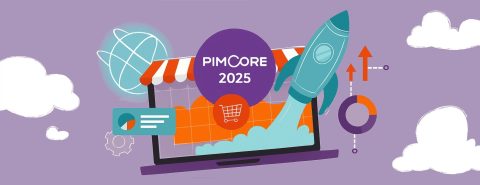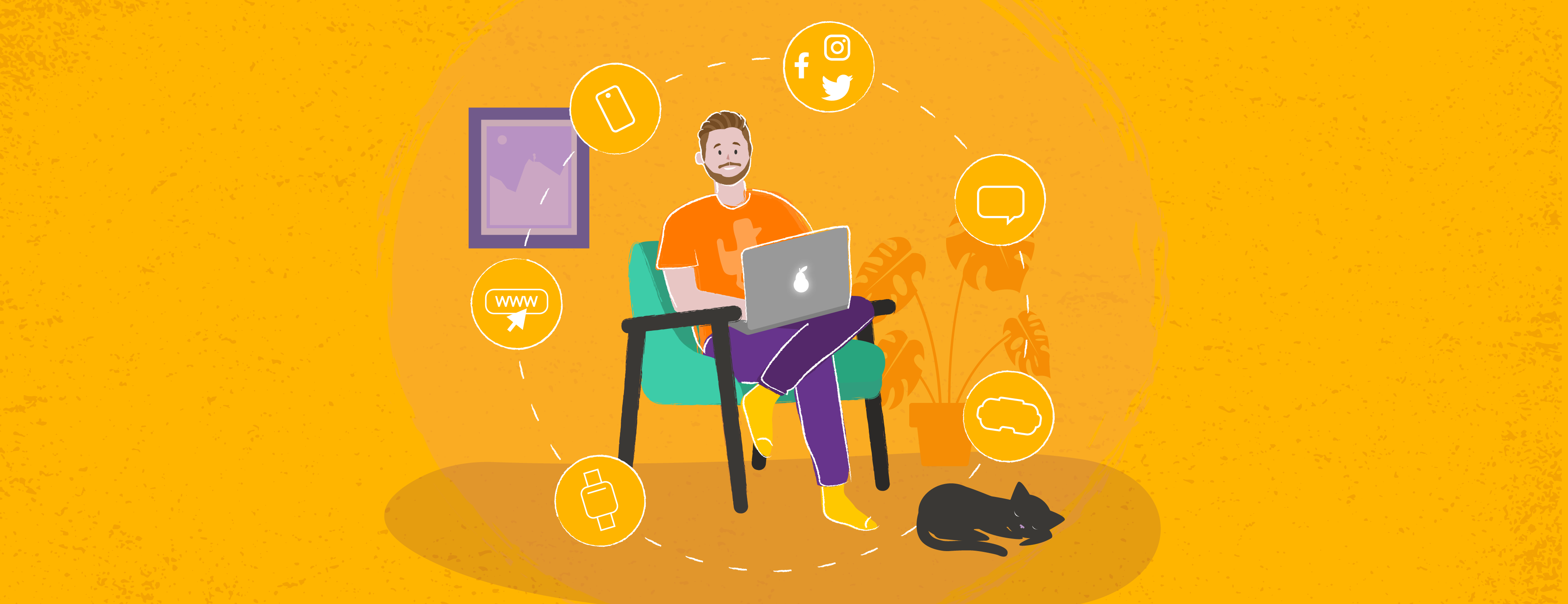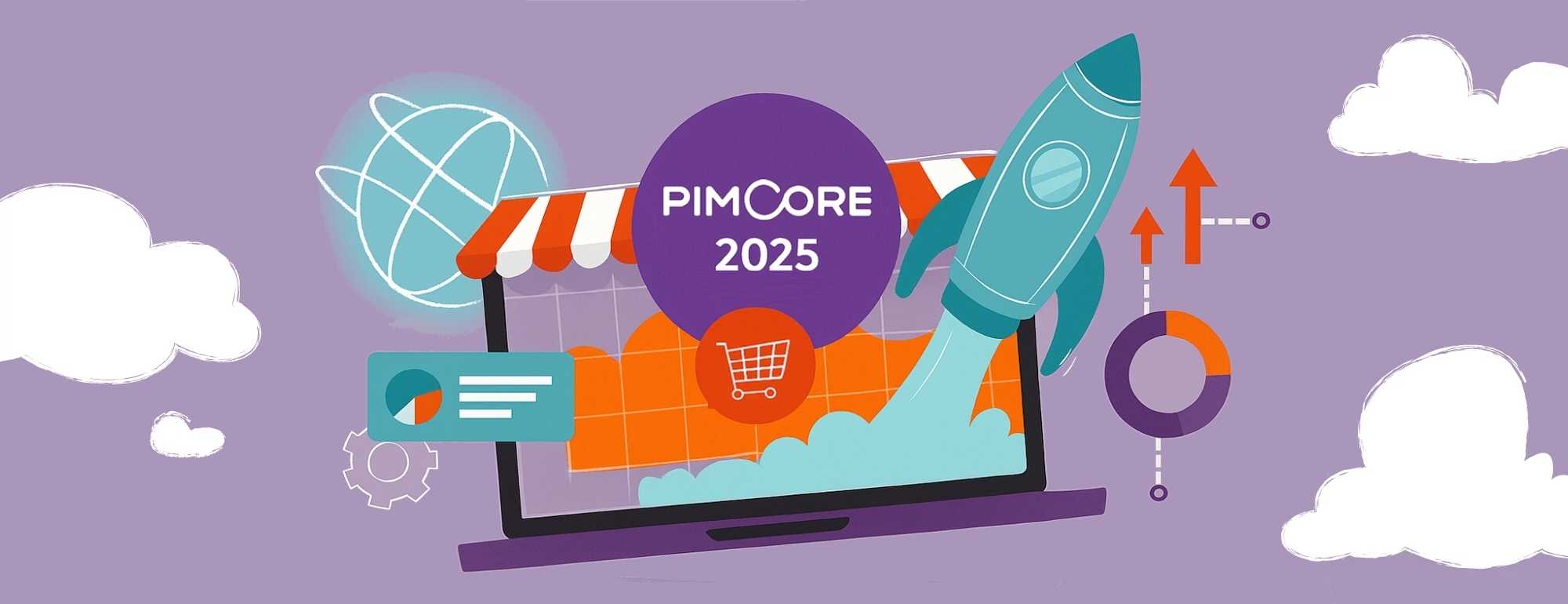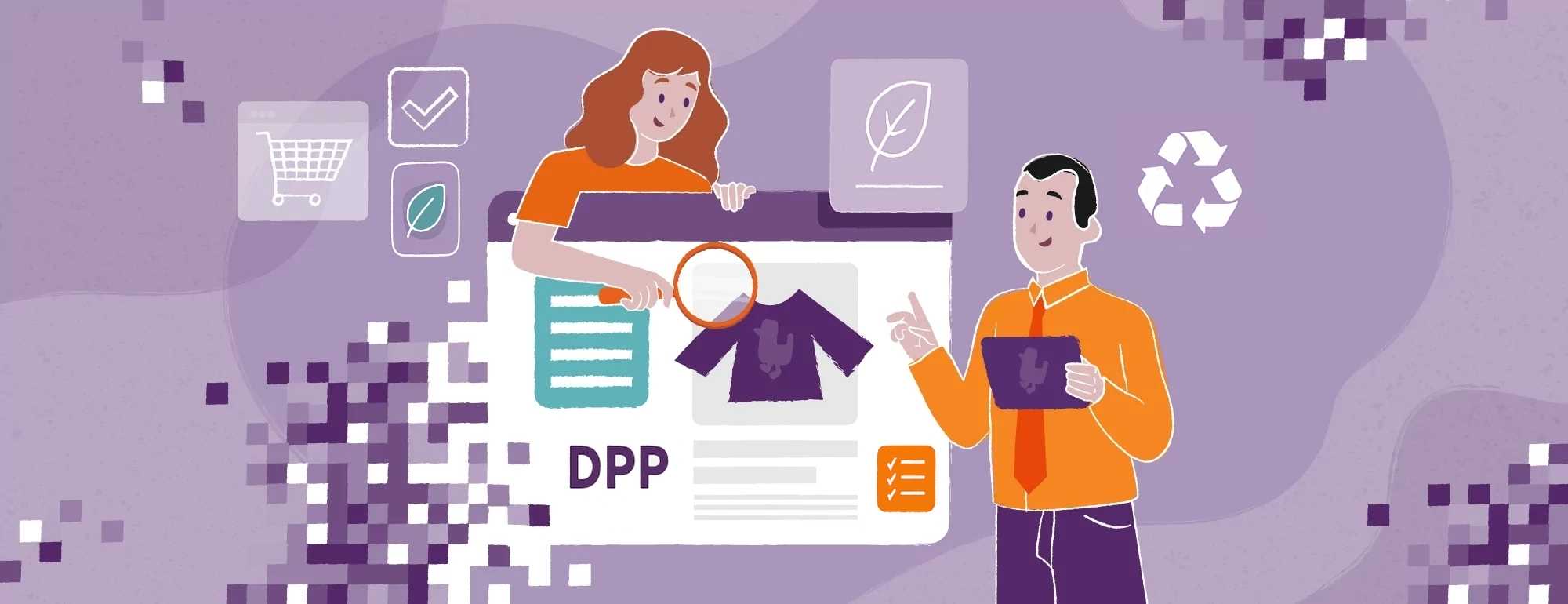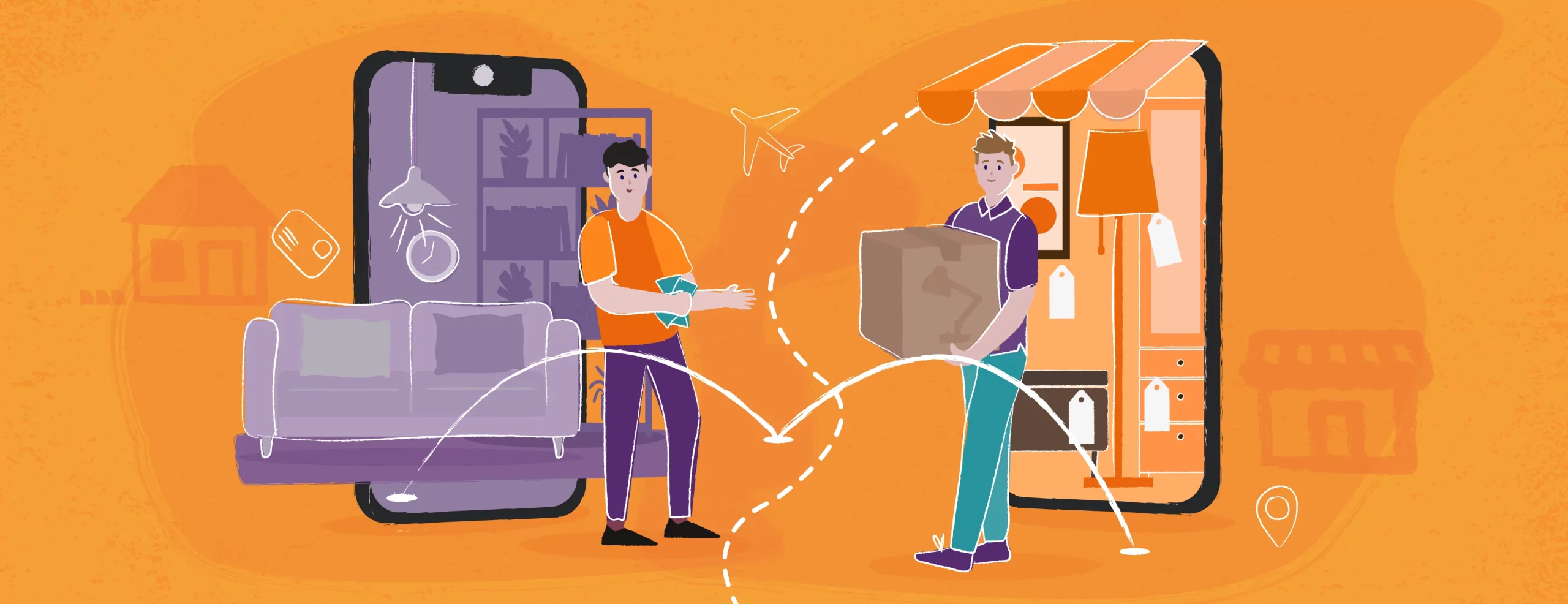What Are Omnichannel Experiences? Benefits, Trends, and Examples
*Note: this blogpost was written by our friends at Kontent.ai in support of Commerce Days Transformation 2022. Check them both out! 👍
How can you create a cohesive experience for customers no matter what channel they’re on or what device they’re using? The answer is going omnichannel.
What Is Omnichannel Content?
Omnichannel content is about blending all channels together into one seamless brand experience. It’s about allowing the customer to move from one channel to another with ease and without losing any of their information or context.
So going omnichannel doesn’t mean you have to greet someone on every channel and convince them that you’re everywhere. Instead, it’s about meeting your customer where they already are, on whichever channel is most convenient for them, and providing them with a consistent experience across those channels.
What Are the Benefits of Omnichannel?
If you decide to go omnichannel, these are the benefits you’ll be able to enjoy:
• Increased sales – Shoppers spend more money when they can shop both online and offline. Omnichannel retailers also see higher conversion rates than those who only sell online or in brick-and-mortar stores.
• Higher customer satisfaction levels – Customers are happier when they have more options for making purchases and interacting with businesses. According to an enVista Retail Market Research report, 72% of consumers tend to shop retail brands that allow them to purchase and return across channels.
• Improved brand recognition – Omnichannel marketing helps you expand your reach so more people are exposed to your brand and what it has to offer.
• Enhanced targeting capabilities – You can use information collected from various platforms and channels to gain a better understanding of what makes your customers tick, allowing you to better tailor your offerings.
• Improved customer service – When you’re accessible via multiple platforms and channels, it becomes easier for customers to reach out when they have questions or concerns.
Now, let’s take a look at three trends we’re seeing in today’s consumer world.
Trend #1: Consumers Want Omnichannel Convenience
The rise of social media and customer service tools has changed the way customers communicate with brands. Having a website or mobile app (or both) is no longer enough. Today, customers want to use new, modern channels to communicate with brands and buy products as easily as possible.
According to The 2021 Omnichannel Report by Digital Commerce 360, retail chains that were most successful during the pandemic were those that quickly embraced or expanded omnichannel services such as curbside pickup, on-demand local delivery, Buy Online Pick Up in Store (BOPIS). Chains reporting sales growth included Target, Walmart, or electronics retailer Best Buy Co.—all of which embraced omnichannel in high-profile ways.
Trend #2: Emerging Channels Change the Way We Communicate
Imagine you’re busy cooking in the kitchen with messy fingers and you realize you really need to consult the recipe. Voice-enabled digital assistants, such as Amazon Echo or Google Home, are always on and ready to answer your questions or take your orders.
Perhaps you’re refurbishing and want to see what a new bookcase will look like in your living room. No problem, not only will an augmented reality app show you what it would look like in situ, but it will even measure the size of the space to make sure it fits.
And these are just a small sample of the fun our customers are in store for. We find ourselves using more channels than ever before, including virtual reality, wearables, connected cars, and smart home appliances, among others.
Trend #3: Marketers Need to Manage More and More Channels
All these new channels create great opportunities for marketers to engage their customers in new ways. If your customers are not talking to your chatbot, it’s likely they’re talking to one of your competitors.
Now you may be thinking, “Do I really need to support all these new channels?” Well, no, not really. Some of them may not be relevant for your particular audience. And, quite frankly, some of these new channels may not stick in the market after the initial hype.
One thing is clear, though: The number of channels will continue to grow and you can’t know now which channels will be the next big thing for your business even one year from now. You don’t want your content efforts today to be wasted by having a use-by date—you want it to be able to adapt to any new (even yet-to-be-conceived) channel, meaning your investment today is still relevant tomorrow. The only way to ride the wave of the omnichannel storm is by creating futureproof content.
Adding New Channels Can Create a Multichannel Nightmare
With so many touchpoints for customers to interact with a brand, both online and offline, it’s important for businesses to have a consistent message across all platforms. The problem is that some teams may not be ready for this. The tools they use often reflect the organizational silos they work in:
- Their digital team is managing the content in a Web Content Management (WCM) system and Digital Asset Management (DAM) system.
- Their social media team prepares messages in tools like Buffer or Hootsuite.
- Their e-commerce team manages product details in their commerce platform, ERP or Product Information Management (PIM) system.
What will happen when they suddenly have to start supporting even more channels?
What we get is a complete multichannel nightmare: large inefficiencies, duplication of work, and inconsistent experiences for customers.
An Omnichannel Approach Makes Your Content Flow More Smoothly
What if all content was created and stored in just one place? That way, all teams in an organization could all create and access content easily. Not only would each channel be able to see what the other channel is doing, but each channel would always have the most up-to-date version and brand messages would be much better aligned to ensure a better customer experience.
What if instead of entering content manually into multiple tools, we could produce the content just once and it could then be pushed directly to all our channels? The various teams wouldn’t need to download and upload the content or create new content specifically for their channel.
Instead of thinking and operating in silos, you need a single repository – a single source of truth for your content.
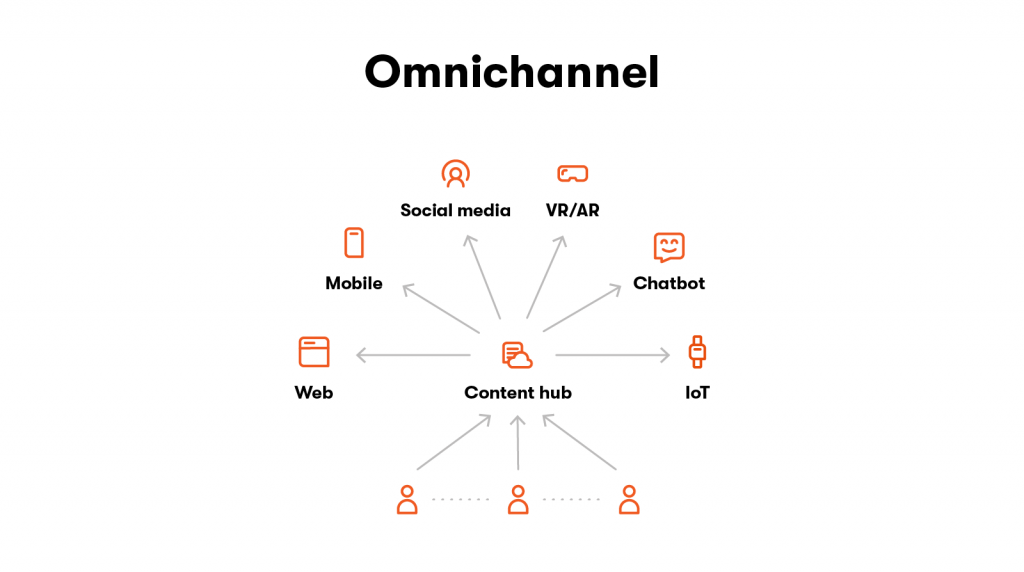
Think Strategically About Your Content
By creating an omnichannel content strategy, organizations can deliver a more consistent customer experience across channels, as well as increase their ROI on content creation. You should ask yourself:
- What content do we create?
- Who owns the content?
- How do we structure it for reuse across channels?
- Where do we store it?
- How do we publish it through the right channels?
- How do we know it was successful?
A Headless CMS is the Core of an Omnichannel Content Management Solution
The concept of having one cloud-based hub for all your content that can be managed, structured, and reused across all channels, creates win-win situations for all teams involved. Because the headless concept puts content at the core of all processes and separates it from any presentational elements, it allows you to distribute it anywhere via its API—yes, even to technology not on the market yet.
Its cloud-based nature enables easy collaboration with people both within and outside your organization and ensures everybody has the latest version of content.
It also means that you can start building your omnichannel architecture today, without waiting for any complex setup.
Want to learn more? Start your free trial or schedule a free Kontent.ai demo to discuss your needs.
=> This article was originally published on Kontent’s blog.
